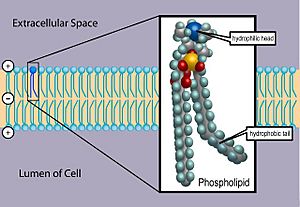Self-organization facts for kids


Self-organization is when order appears all by itself from something that was once messy or random. It's like magic, but it's science! This process happens naturally. No one is telling it what to do, and nothing is controlling it from the inside or outside.
Self-organization can be seen in many different areas. These include physical things, chemicals, living things, and even how people interact. A simple example is when crystals form. Another important example is the lipid bilayer. This is a key part of every cell membrane, which is like the skin of a cell.
Many things that self-organize have "emergent" properties. This means you can't always guess what will happen. There are often too many possibilities to study them all.
Here are some cool examples:
- Protein folding: After a cell makes a protein, it folds itself into a special working shape. Each protein has one or two stable shapes. But it's very hard to guess the final shape just by looking at its amino acid sequence.
- Free markets: Some people believe that free market economies create their own order. They think this order is more efficient than any plan made by a central group. This idea is sometimes called the "invisible hand." It means that when people act on their own information, the whole economy can become better for everyone.
Images for kids
-
This DNA structure (left) builds itself into the shape shown on the right.
See also
 In Spanish: Autoorganización para niños
In Spanish: Autoorganización para niños






